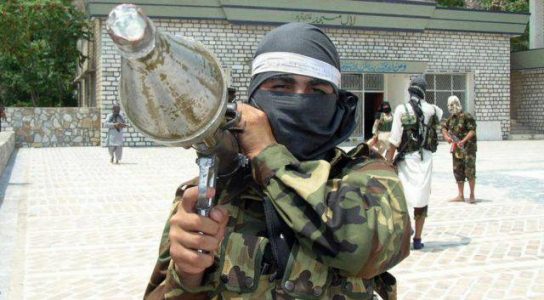
Al-Qaeda and Islamic State terrorists are cooperating in Afghanistan
Frequent speculation has recently been posited that Islamic State (IS) and al-Qaeda affiliates could eventually coalesce again, or at the least, begin cooperating at a more notable level than was seen at the height of the conflict in Syria.
The death of IS Caliph Abu Bakr al-Baghdadi provided fresh evidence of likely cooperation between the two, despite their strategic differences and turf wars. Outside of Syria, most notably in Afghanistan, circumstances on the ground could further necessitate such cooperation.
U.S. special forces conducted Operation Kayla Mueller on October 26-27 in the village of Barisha in Syria’s rebel-controlled Idlib province. The well-executed operation resulted in the death of al-Baghdadi along with his children and guards, seriously damaging the organizational structure of IS. Scores of children were rescued and several IS militants were taken into custody.
Syrian Democratic Forces (SDF) had reportedly supplied critical intelligence about Baghadi’s presence in Barisha, just five kilometers from the Turkish border. The most notable aspect of where Baghdadi was killed was that it was located in an area controlled by Jamaat Huras ad Din (HaD) an al-Qaeda affiliate in Syria led by Khalid al-Aruri, an al-Qaeda veteran of ethnic Palestinian origin.
The existence of Baghdadi’s safe house in a locality controlled by an al-Qaeda affiliate is a matter of great concern and needs to be taken seriously. Another revelation that came to light after the raid was that Baghdadi and his cohorts were paying HaD a large amount to secure safe havens in areas under the group’s control.
Receipts of payments collected by U.S. special forces indicate a sum of $67,000 was paid by Baghdadi to HaD leadership for staying in Barisha (Middle East Eye, November 9, 2019). New information also revealed that it was not the al-Qaeda affiliate that supplied the critical intelligence to SDF, but some of Baghdadi’s own trusted and close confidants. This again indicates that Baghdadi and HaD had developed enough of a working relationship or low-end cooperation for HaD to keep his location concealed.
IS first emerged in Afghanistan after the proclamation of the caliphate in July 2014. IS maintained an anti-Taliban stance in Afghanistan from the beginning of the organization’s founding (Terrorism Monitor, August 10, 2018). The Taliban are an old al-Qaeda ally and have long worked hand in hand. The late al-Qaeda emir Osama bin Laden famously pledged allegiance to the Taliban’s then supreme leader, Mullah Muhammad Omar.
Later, Ayman al-Zawahiri, the new emir of al-Qaeda, renewed his pledge of allegiance to subsequent Taliban supreme leaders. IS’s local chapter, Islamic State-Khurasan (IS-K), routinely fought against the Taliban during the early phase of its presence in Afghanistan. The violence significantly declined following reported peace deals that were brokered by al-Qaeda to settle disputes between the Taliban and IS-K.
The Taliban, under the leadership of their new emir Mullah Haibatullah, appeared more content to target Afghan National Security Forces (ANSF) and U.S. forces rather than fight directly with IS-K. While direct violence between the two declined, the Taliban’s peace negotiations with the United States is likely what led the Taliban to reportedly aid the ANSF in operations against IS-K.
As part of the peace negotiations, the Taliban is supposed to assist in rooting out al-Qaeda and IS-K, potentially placing both groups in a challenging position, similar to the situation al-Qaeda affiliates and IS faced in Syria as their territories collapsed. If the Taliban is no longer helping to support and shelter al-Qaeda, or it loses trust that the group will conceal its whereabouts, al-Qaeda could seek out a strategic agreement with IS-K, at the least secure a safe haven (Terrorism Monitor, July 12, 2019).
Considering the situation both al-Qaeda and IS-K could face if ANSF efforts against the Taliban slow, a greater necessity for some level of cooperation could grow, as has been seen in Syria. IS-K has lost numerous leaders, and al-Qaeda is still attempting to regroup in Afghanistan and could lose some of the vital support it receives from the Taliban.
Both organizations are facing an acute shortage of seasoned and experienced commanders and strategic planners. Naturally, pooling resources could help to solve much of their problems. Al-Qaeda appears to be short of finances, whereas IS-K likely has greater funds from the larger IS network, which accumulated substantial resources during its five year rule over territories in Iraq and Syria.
Source: Jamestown





